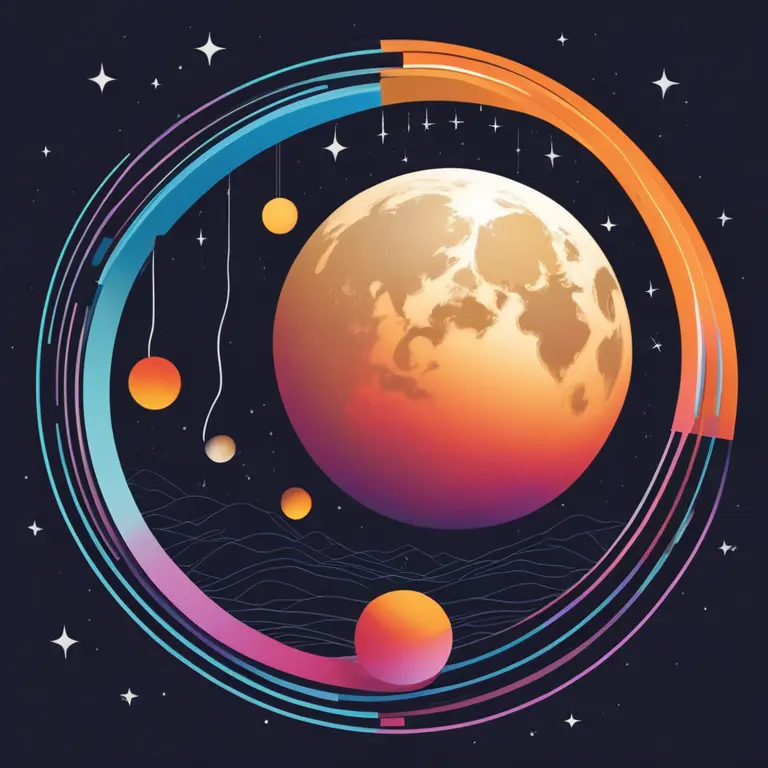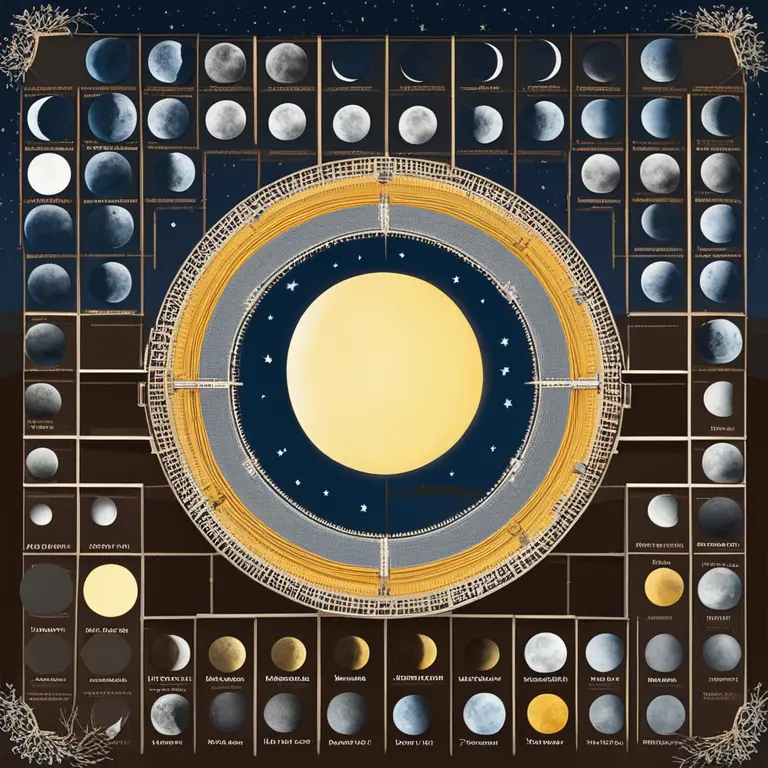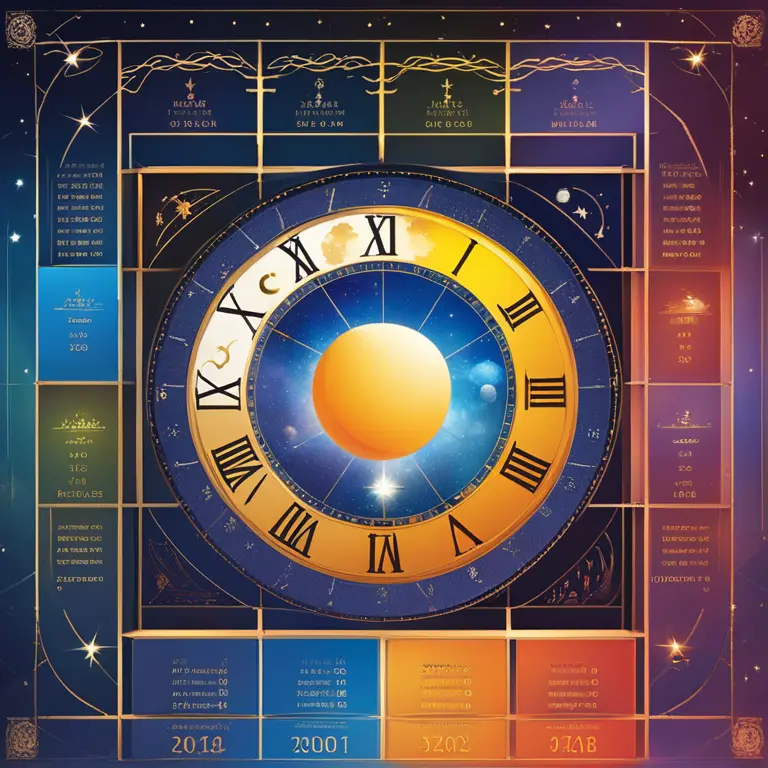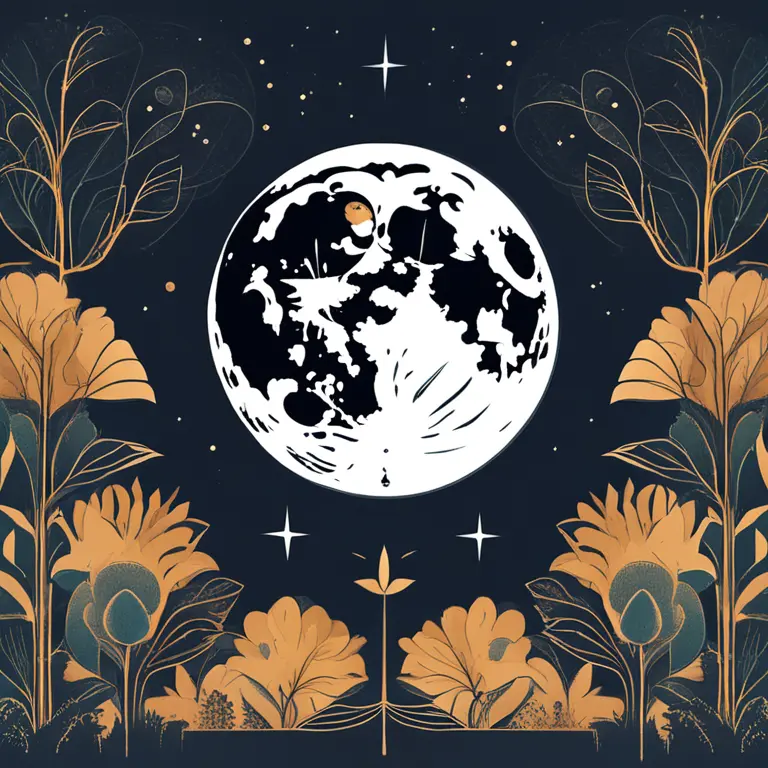
The Rhythms of Night: Moon Phase Rise & Set Times
Delve into the celestial mechanics of moonrise and moonset times across the lunar cycle, and their influence on astrology and personal rhythms.
article by Priya Deshmukh
Moon's Orbital Dance
Amidst the inky canvas of the night sky, the Moon—Earth's closest celestial companion—performs a mesmerizing orbital dance. Its phases, from New Moon to Full Moon and back, are a result of the interplay of sunlight, the Moon's orbit, and the viewing angle from Earth. Understanding the timing of moonrise and moonset during each phase is essential for astrologers and enthusiasts alike. Each Moon phase heralds specific energies and insights into one's personal and cosmic rhythms, with implications for horoscopes and astrological forecasts. The predictability of these events, governed by celestial mechanics, allows us to plan and reflect with precision.

Cycling Through Phases
As the Moon cycles through its phases every 29.5 days, moonrise and moonset times change daily. During the New Moon phase, the Moon rises and sets roughly with the Sun, rendering it nearly invisible against the daytime sky. Contrastingly, at Full Moon, moonrise occurs close to sunset, and moonset aligns with sunrise, dominating the nocturnal hours with its silvery glow. The waxing and waning periods in between New and Full Moon—First Quarter and Last Quarter—serve as transitional points, with moonrise and moonset times shifting by approximately one hour each day.

Astrological Significance
The Moon’s passage through the zodiac influences its rising and setting times as well. Each zodiac sign imparts its energies onto the lunar influence. For example, a Full Moon in Aries in 2024 propels dynamic initiation, infusing moonrise with assertive energy, while a serene Pisces New Moon invites introspection at moonset. These celestial cues play a pivotal role in creating personalized forecasts and horoscopes. As such, tracking the Moon phase calendar is a critical practice for astrologers mapping out future trends and personal guidance cues.

Practical Applications
Moon phase rise and set times are not solely important for astrological pursuits; they also affect biorhythms and compatibility assessments. The Full Moon, for instance, often correlates with heightened emotions and creativity, an aspect valuable when assessing interpersonal dynamics. Knowledge of these timings allows individuals to align their actions with the natural ebb and flow of lunar energies, stepping into harmony with the cycles of nature for enhanced well-being and personal growth.

Modern Toolsets
In the digital age, accessing precise moonrise and moonset times has never been easier. Various online platforms and mobile applications now provide real-time data adjusted for geographic locations, ensuring that enthusiasts and professionals alike can stay attuned to the Moon's rhythms. For those seeking to include lunar timing in their daily routines or spiritual practices, such tools are instrumental in harnessing the tides of energy offered by the celestial sphere.
Published: 1/19/2024
Modified: 1/19/2024
More predictions
Come back here soon to learn more about yourself and your future


Between Moon Phases and Soulmate Connections
Discover the mystical link between lunar cycles and soulmate encounters. This article delves into the celestial influence on love and relationships.


Moon Phases and Menstrual Cycles: Celestial Rhythms
Discover the fascinating connection between the lunar cycle and women's menstrual cycles, and how moon phases may influence physical and emotional health.


The Nighttime Moon Phase: When It’s Visible to Observers
Learn which moon phase graces the night sky and discover its unique characteristics and impact on astrology and personal biorhythms.